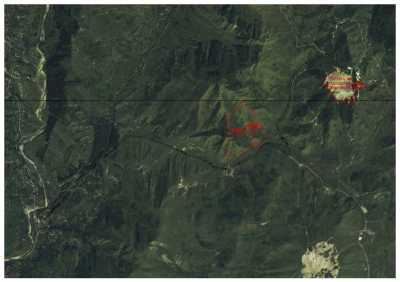The WPJ
THE WORLD PROPERTY JOURNALReal Estate Facts Not Fiction
Residential Real Estate News

Rural Areas in U.S. Lagged Behind Urban Markets in Post-Recession Recovery
Residential News » Seattle Edition | By WPJ Staff | September 9, 2019 9:04 AM ET
According to Zillow, in the decade following the Great Recession, job growth has been disproportionately concentrated to the largest U.S. job centers, and home values in these markets have risen accordingly. The 25 largest job markets have accounted for more than half of employment growth and nearly two-thirds of home value growth in the U.S. since July 2009.
While housing inventory rose modestly in July, the market has been characterized by persistently low numbers of for-sale homes over the past few years, exacerbating affordability challenges for prospective buyers in many large markets that have experienced strong job growth during the recovery. A combination of concentrated job growth and inventory shortfalls created an environment for dramatic home value appreciation, concentrating home equity accumulation to large markets to an even greater extreme than concentrated job growth alone.
Rapidly rising home values, and a corresponding rise in what's needed for a down payment, are a main reason homeownership rates are lower for young people during the economic expansion than those who reached the same age during or immediately after the Great Recession. Those who graduated from 2007-2010 averaged a homeownership rate of 30.4% four years after graduation, while the classes of 2011-2014 averaged a homeownership rate of 25.3% after the same period despite graduating into a markedly better job market. The pattern holds for non-graduates entering their early 20s - the 2007-2010 group averaged a homeownership rate of 21.1% compared with 18.8% for the 2011-2014 cohort.
Unlike this economic expansion, job growth was strongest in small or rural areas, and home value growth was more aggressive in the very largest and very smallest markets during the previous expansion in the early-to mid-2000s. At that time, rural areas accounted for 14.8% of job growth and home values outperformed the national average by 7.1%. During the expansion since the Great Recession, the proportion of job growth has fallen by more than half to 7%, while housing in rural areas has underperformed the national market by nearly 10%.
"The striking difference between the two periods of recent economic expansion is the contrast between more balanced growth across the U.S. in the early 2000s, to a fairly consistent pattern of rural and small markets being left behind as jobs and home value growth concentrate in large markets," said Skylar Olsen, director of economic research at Zillow. "The jobs story is one of continuing struggles in rural and small markets where manufacturing and agriculture are concentrated. But large cities are seeing another side of the problem in home value growth. It's not only about job vitality but also a city's ability to increase the amount of housing to meet that influx of workers. Job concentration increasingly means that already expensive metros are becoming even more expensive at a faster rate than before."
Growth has been strongest in second-tier markets, ranging from the 11th-largest U.S. job market (Seattle) to the 25th-largest (Pittsburgh). These metros as a whole have outpaced the national average employment growth by 4% and the average home-value growth by 7.6% during this period. Much of this can be attributed to strong growth in a cluster of western areas in this group - Denver (33.5%), Riverside (30.2%), Seattle (24.5%), San Diego (19.2), Phoenix (13.9%) and Portland (10.1%) have each outperformed the national housing market by double digits. Baltimore (-35.2%) and St. Louis (-25.3%) have greatly underperformed compared to the national average.
Housing in the next tier of job markets - ranging from 26th-largest (San Jose) to the 50th-largest (Rochester) - has also performed well, beating the national average home value growth by 6.1%. However, nearly all of this can be attributed to extreme growth in San Jose, which has outpaced the national housing market by a staggering 81.6%. Previous Zillow research has shown that California alone has accounted for nearly one-third of the value gained during this housing recovery.
While housing inventory rose modestly in July, the market has been characterized by persistently low numbers of for-sale homes over the past few years, exacerbating affordability challenges for prospective buyers in many large markets that have experienced strong job growth during the recovery. A combination of concentrated job growth and inventory shortfalls created an environment for dramatic home value appreciation, concentrating home equity accumulation to large markets to an even greater extreme than concentrated job growth alone.
Rapidly rising home values, and a corresponding rise in what's needed for a down payment, are a main reason homeownership rates are lower for young people during the economic expansion than those who reached the same age during or immediately after the Great Recession. Those who graduated from 2007-2010 averaged a homeownership rate of 30.4% four years after graduation, while the classes of 2011-2014 averaged a homeownership rate of 25.3% after the same period despite graduating into a markedly better job market. The pattern holds for non-graduates entering their early 20s - the 2007-2010 group averaged a homeownership rate of 21.1% compared with 18.8% for the 2011-2014 cohort.
Unlike this economic expansion, job growth was strongest in small or rural areas, and home value growth was more aggressive in the very largest and very smallest markets during the previous expansion in the early-to mid-2000s. At that time, rural areas accounted for 14.8% of job growth and home values outperformed the national average by 7.1%. During the expansion since the Great Recession, the proportion of job growth has fallen by more than half to 7%, while housing in rural areas has underperformed the national market by nearly 10%.
"The striking difference between the two periods of recent economic expansion is the contrast between more balanced growth across the U.S. in the early 2000s, to a fairly consistent pattern of rural and small markets being left behind as jobs and home value growth concentrate in large markets," said Skylar Olsen, director of economic research at Zillow. "The jobs story is one of continuing struggles in rural and small markets where manufacturing and agriculture are concentrated. But large cities are seeing another side of the problem in home value growth. It's not only about job vitality but also a city's ability to increase the amount of housing to meet that influx of workers. Job concentration increasingly means that already expensive metros are becoming even more expensive at a faster rate than before."
Growth has been strongest in second-tier markets, ranging from the 11th-largest U.S. job market (Seattle) to the 25th-largest (Pittsburgh). These metros as a whole have outpaced the national average employment growth by 4% and the average home-value growth by 7.6% during this period. Much of this can be attributed to strong growth in a cluster of western areas in this group - Denver (33.5%), Riverside (30.2%), Seattle (24.5%), San Diego (19.2), Phoenix (13.9%) and Portland (10.1%) have each outperformed the national housing market by double digits. Baltimore (-35.2%) and St. Louis (-25.3%) have greatly underperformed compared to the national average.
Housing in the next tier of job markets - ranging from 26th-largest (San Jose) to the 50th-largest (Rochester) - has also performed well, beating the national average home value growth by 6.1%. However, nearly all of this can be attributed to extreme growth in San Jose, which has outpaced the national housing market by a staggering 81.6%. Previous Zillow research has shown that California alone has accounted for nearly one-third of the value gained during this housing recovery.
Sign Up Free | The WPJ Weekly Newsletter
Relevant real estate news.
Actionable market intelligence.
Right to your inbox every week.
Real Estate Listings Showcase

$1,475,000
Townhome For Sale
Phoenix, Arizona

49,000,000 THB
Villa For Sale
Hua Hin, Thailand

$2,620,000
Home For Sale
Tarzana, California

$2,500,000
Mixed-Use Land For Sale
Von Ormy, Texas

$1,575,000
Condo For Sale
Winter Park, Florida

$795,000
Home For Sale
Cuenca, Ecuador

$8,195,000
Home For Sale
Isle of Palms, South Carolina

$740,000
Home For Sale
West Palm Beach, Florida

$291,264
Home For Sale
Dubai South, United Arab Emirates

€1,600,000
Residential Land For Sale
Scortoasa, Romania

$750,000
Mixed Use For Sale
Corozal, Belize

$2,800,000
Commercial New Construction For Sale
General Luna, Philippines
Related News Stories
Residential Real Estate Headlines
- More Americans Opting for Renting Over Homeownership in 2024
- BLOCKTITLE Global Property Tokenization Platform Announced
- Small Investors Quietly Reshaping the U.S. Housing Market in Late 2024
- Greater Miami Overall Residential Sales Dip 9 Percent in November
- U.S. Home Sales Enjoy Largest Annual Increase in 3 Years Post Presidential Election
- U.S. Housing Industry Reacts to the Federal Reserve's Late 2024 Rate Cut
- U.S. Home Builders Express Optimism for 2025
- Older Americans More Likely to Buy Disaster-Prone Homes
- NAR's 10 Top U.S. Housing Markets for 2025 Revealed
- U.S. Mortgage Delinquencies Continue to Rise in September
- U.S. Mortgage Rates Tick Down in Early December
- Post Trump Election, U.S. Homebuyer Sentiment Hits 3-Year High in November
- Global Listings Aims to Become the Future 'Amazon of Real Estate' Shopping Platform
- Greater Las Vegas Home Sales Jump 15 Percent in November
- Ultra Luxury Home Sales Globally Experience Slowdown in Q3
- World Property Exchange Announces Development Plan
- Hong Kong Housing Market to Reach Equilibrium in Late 2025
- Construction Job Openings in U.S. Down 40 Percent Annually in October
- U.S. Mortgage Applications Increase in Late October
- World Property Markets, World Property Media to Commence Industry Joint-Venture Funding Rounds in 2025
- New Home Sales Hit 2 Year Low in America
- U.S. Pending Home Sales Increase for Third Consecutive Month in October
- Pandemic-led Residential Rent Boom is Now Fizzling in the U.S.
- Emerging Global Real Estate Streamer WPC TV Expands Video Programming Lineup
- 1 in 5 Renters in America Entire Paycheck Used to Pay Monthly Rent in 2024
- U.S. Home Sales Jump 3.4 Percent in October
- Home Buyers Negotiation Power Grows Amid Cooling U.S. Market
- Canadian Home Sales Surge in October, Reaching a Two-Year High
- Greater Orlando Area Home Sales Continue to Slide in October
- U.S. Mortgage Credit Availability Increased in October
- U.S. Mortgage Rates Remain Stubbornly High Post Election, Rate Cuts
- Construction Input Prices Continue to Rise in October
- BETTER MLS: A New Agent and Broker Owned National Listings Platform Announced
- Home Prices Rise in 87 Percent of U.S. Metros in Q3
- Caribbean Islands Enjoying a New Era of Luxury Property Developments
- The World's First 'Global Listings Service' Announced
- Agent Commission Rates Continue to Slip Post NAR Settlement
- Market Share of First Time Home Buyers Hit Historic Low in U.S.
- Greater Palm Beach Area Residential Sales Drop 20 Percent Annually in September
- Mortgage Applications in U.S. Dip in Late October
Reader Poll
In 2025, which region of the world are you most likely to buy or invest in real estate?





